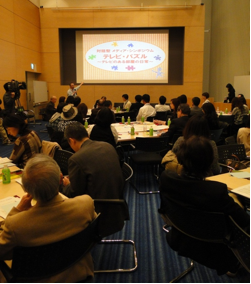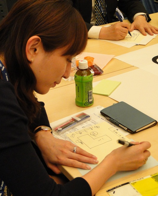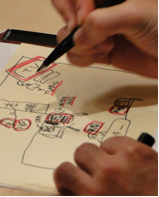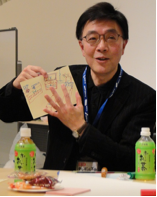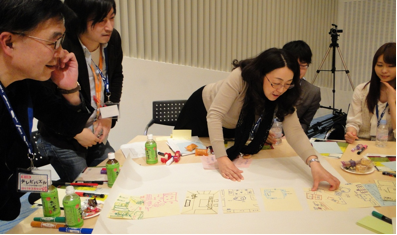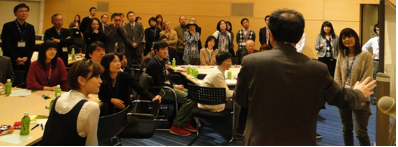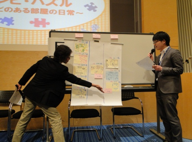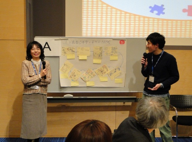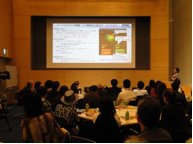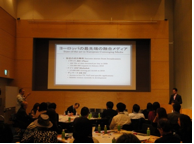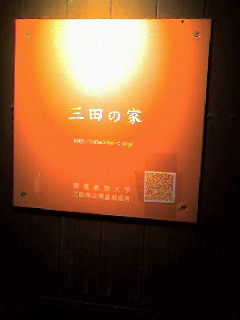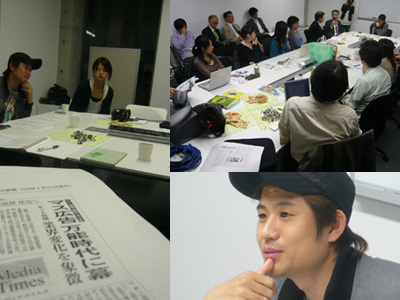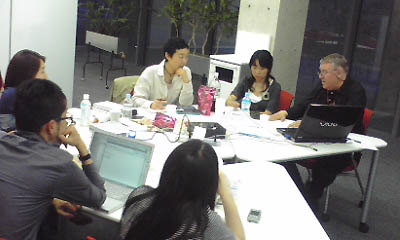On December 4, 2012, Shin Mizukoshi Laboratory organized a lecture and discussion about the wartime situation in Syria. Professors, journalists, students and researchers listened to a presentation by father Zygmunt Kwiatkowski, a Polish Jesuit missionary who has worked in Syria and other countries of the Middle East for over 30 years. Recently, he has shared his time between Damascus, Homs and Aleppo, where a Japanese journalist, Mika Yamamoto was killed this summer. Father Kwiatkowski arrived in Japan on December 1st (at the invitation of the Polish Catholic community in Japan). His talk was a rare opportunity to get an insider’s report of the civil war in Syria, caused by political as well as religious tension.

Father Kwiatkowski shared with us the stories of people who suffered in the war. Many of his parishioners lost their homes and fled to neighboring countries such as Lebanon. The speaker talked about the contrast between the prewar safety and wealth and the atmosphere of constant terror and fear in which the people in Syria live now. He posed several questions, such as: can democracy be introduced with violent means, and at what cost? Father Kwiatkowski emphasized the difference between compromise and reconciliation. According to him, only the latter can lead towards true peace. He emphasized the need for reconciliation between different groups within Syria rather than the hope for external intervention.
Father Kwiatkowski also referred to the situation of Christians who are a minority in a country dominated by Muslims. Violence is a part of everyday reality in Syria now, but he has not observed any hostility targeted specifically at Christians. According to him, Christians are not perceived as a threat because they are dispersed throughout the country and not organized into armed groups. He expressed hope for a union between the Arab Orthodox Church and Catholic Church in the near future.
The presentation was followed by short discussion and questions. Professor Shin Mizukoshi compared the stories of the war victims in Syria to the stories of earthquake victims in Tohoku. From the viewpoint of Tokyo, they seem to be cases of “remote suffering” which can be understood only partially through storytelling. Professor Mizukoshi said that during this meeting, we could experience the basic connectedness as human beings, regardless of our education, social status and cultural background.
The meeting was organized by professor Shin Mizukoshi, Dorota Halasa (a Polish journalist based in Tokyo) and Dr. Iwona Merklejn (an international research fellow in Shin Mizukoshi Lab, originally from Poland, Nicolaus Copernicus University). Father Kwiatkowski will also give lectures about human rights issues in Syria at the Shizuoka University of Art and Culture (December 14) and Sophia University (January 18, 2013).
Public talks by Father Zygmunt Kwiatkowski (with Japanese translation):
ゼイグムント・クフィァトコフスキ神父「シリアの内戦状況に関する講演会」
(大学生、一般向け;日本語通訳付き)
1.静岡文化芸術大学(静岡県浜松市)
日時:2012年12月14日(金)10:40-14:30
場所:静岡文化芸術大学・文化政策学部文化政策学科
・「現代社会と人権」(森 俊太教授の講義、guest speaker)
・「社会問題、社会変動に関する研究」(森 俊太教授演習、guest speaker)
2.上智大学(東京)
日時:2013年1月18日(金)17:00-18:30
場所:上智大学神学部(四谷キャンパス)
